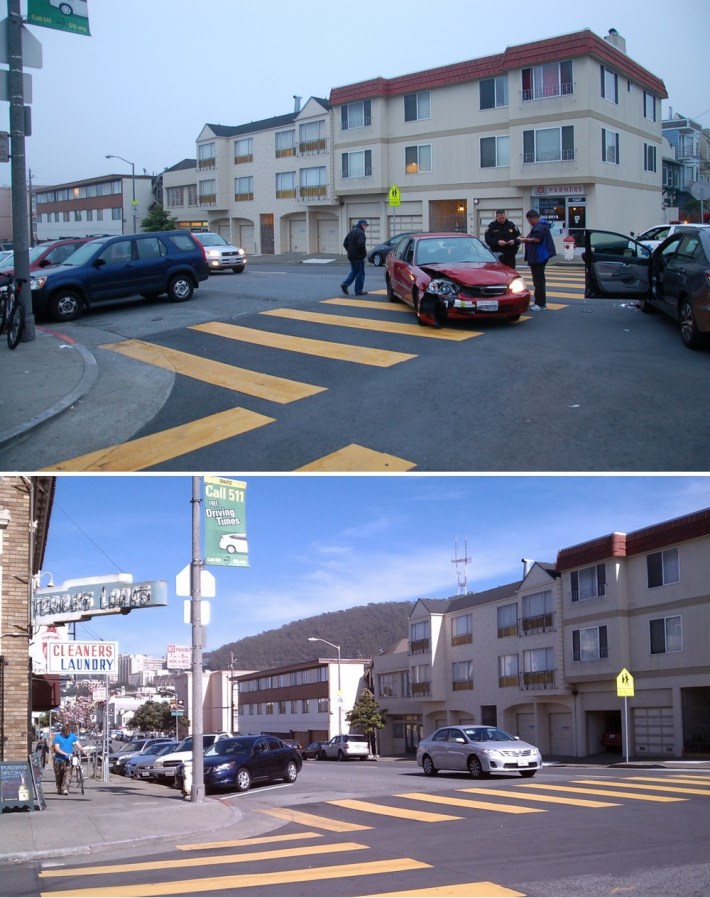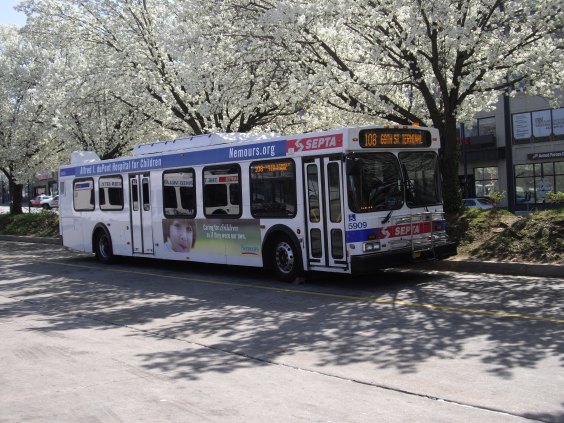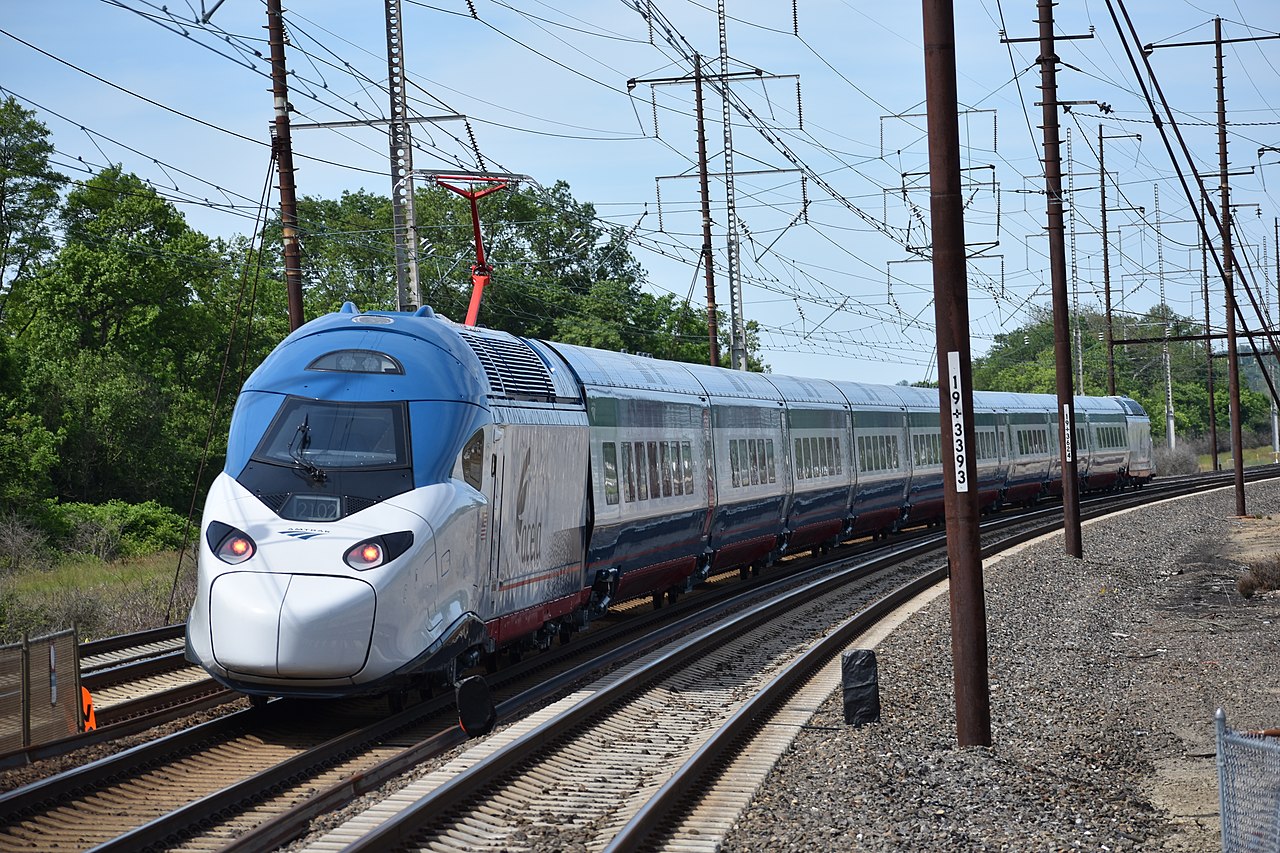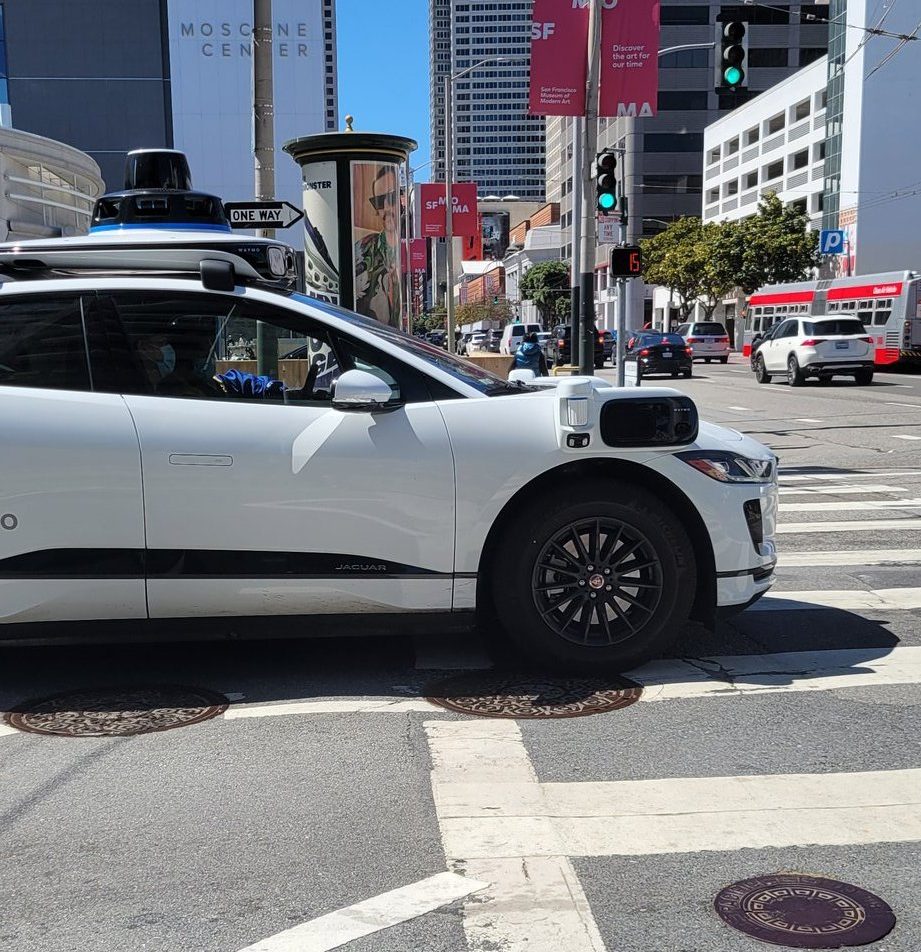Until recently, leaving my apartment was an anxiety-inducing experience.
It's not that I'm agoraphobic. See, the parked cars at my street corner of 15th Avenue and Irving Street used to block the view between people crossing Irving -- by foot, bike, and car -- and those headed down Irving, who have no stop sign. The danger was compounded by a topographical incline, and the fact that the corner spot seemed to be the favorite place to park for the owner of a long pickup truck with an attached camper.
As you can imagine, close calls were routine between people entering the crosswalk (say, to catch the N) and trying to make a left turn on to Irving -- two things I do most of the time I'm going somewhere.
So I was happy to see, in September 2011, that the SFMTA approved a daylighting fix for the intersection. (Daylighting is the removal of parked cars that block visibility at street corners.) But a year and a half went by, and the change still had not been made. Then, one day I heard a car crash outside my window, apparently caused by the poor visibility (no one was injured), and I decided to send an inquiry to the SFMTA about it.
Within a couple weeks, voila -- perpendicular parking spaces near the intersection were converted to angled parking spaces with some stripes and new signs. With the view opened up, entering the intersection is now smooth sailing, comparatively speaking.
The SFMTA regularly approves daylighting treatments at intersections around the city, but I've been told that the agency's paint shop is severely behind schedule on implementing them due to lack of adequate staffing, equipment and vehicles.
If daylighting my corner took over a year and a half -- only after I inquired about it -- I can only imagine how long the backlog is for such simple, potentially life-saving improvements. It seems to be just one more consequence of under-funding our city's street infrastructure.





